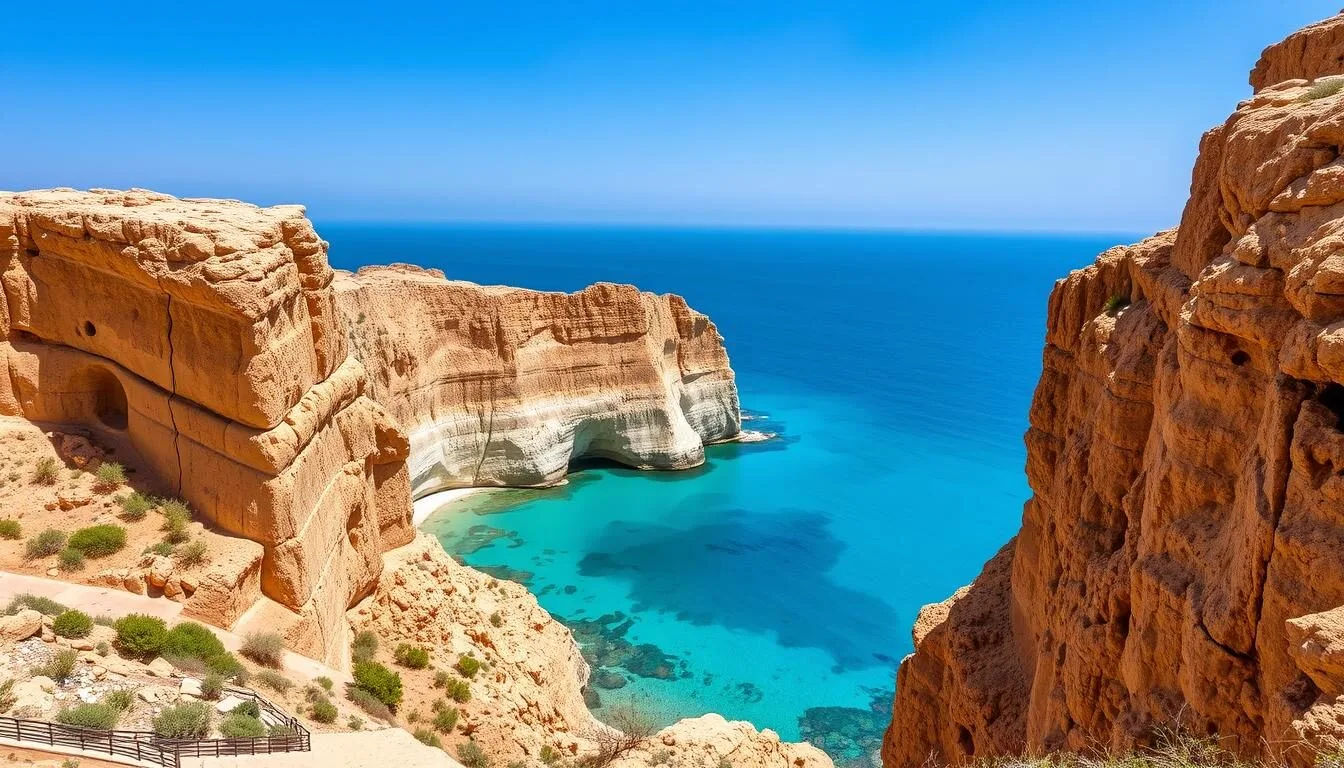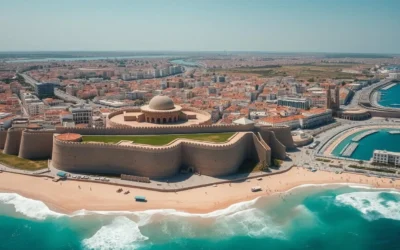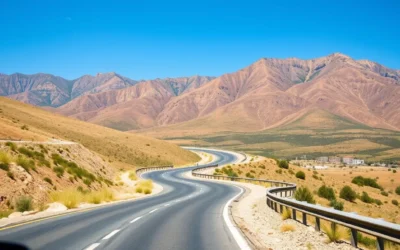Home to one of the Mediterranean’s last monk seal colonies, Zembra National Park is a UNESCO-protected island where wild cliffs plunge 435 m (1,427 ft) into turquoise waters. This remote marine paradise, just 12 km off Tunisia’s northeastern coast, remains one of North Africa’s best-kept natural secrets, with strictly limited visitor access preserving its extraordinary biodiversity.
Zembra National Park Overview
Established in 1977, Zembra National Park encompasses the uninhabited islands of Zembra and Zembretta, forming a vital biosphere reserve that protects both terrestrial and marine ecosystems. The park’s 3,400 hectares include some of the Mediterranean’s most pristine waters and untouched landscapes.
The islands’ rugged terrain, dominated by steep cliffs and rocky shores, provides critical habitat for endangered species. Zembra’s isolation has created a sanctuary where rare birds nest undisturbed and marine life thrives in protected waters.
Ready to Explore Zembra’s Natural Wonders?
Start planning your Tunisian adventure with flights to nearby Tunis, just a short journey from this Mediterranean gem.
Getting There & Planning Your Journey
Visiting Zembra National Park requires advance planning due to its protected status. The island is accessible only by boat from the coastal towns of Sidi Daoud or El Haouaria on Tunisia’s Cap Bon peninsula.
Important: All visits to Zembra require official authorization from Tunisia’s Coastal Protection and Planning Agency (APAL) and the National Guard. Applications should be submitted at least 30 days before your planned visit.
The journey begins with a flight to Tunis-Carthage International Airport, followed by a 1.5-hour drive to Cap Bon. From there, authorized boat tours make the crossing to Zembra in approximately 45 minutes to 1 hour, depending on sea conditions.
How to Obtain Permits
- Contact the regional commissioner of agriculture (CRDA)
- Submit a formal request to the Ministry of Agriculture
- Obtain clearance from the Ministry of Defense
- Book with authorized tour operators who can assist with the permit process
What to Pack
- Sturdy hiking shoes for rocky terrain
- Snorkeling gear (if not provided by tour operators)
- Sun protection (hat, sunscreen, sunglasses)
- Binoculars for birdwatching
- Sufficient water and snacks
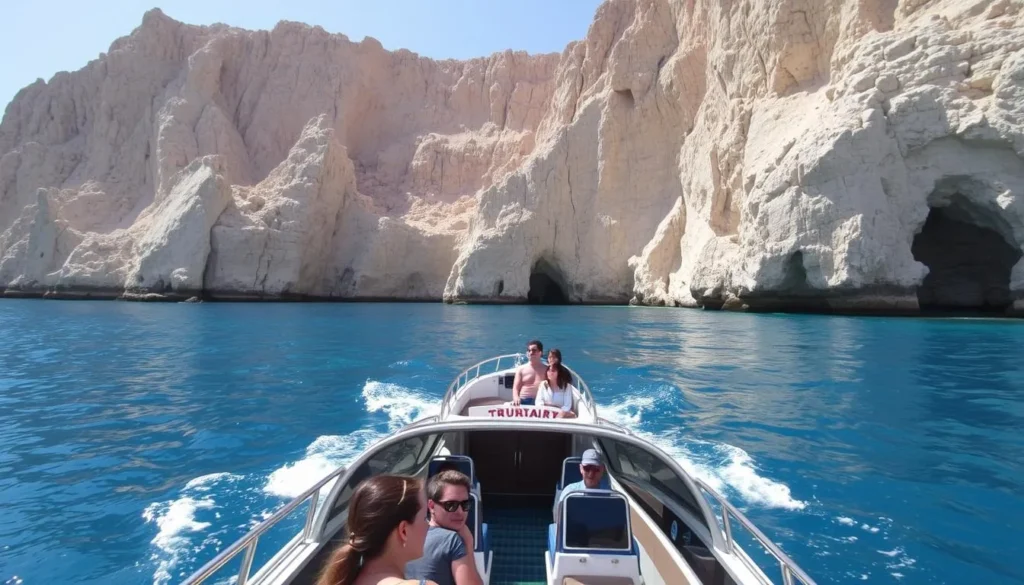
Need Transportation in Tunisia?
Rent a car to reach the coastal departure points for Zembra National Park and explore more of Tunisia’s beautiful Cap Bon peninsula.
Best Time to Visit & Weather Tips
The Mediterranean climate of Zembra National Park creates distinct visiting seasons, each offering different experiences and conditions for exploration.
| Season | Months | Temperature | Sea Conditions | Recommendation |
| Spring | April-May | 18-24°C (64-75°F) | Moderate, occasionally choppy | Excellent for birdwatching during migration |
| Summer | June-August | 26-32°C (79-90°F) | Calm, ideal for crossing | Best for swimming and snorkeling |
| Fall | September-October | 22-28°C (72-82°F) | Generally calm | Fewer visitors, still good for water activities |
| Winter | November-March | 10-16°C (50-61°F) | Rough, often dangerous | Not recommended, limited access |
The best months to visit Zembra are May through September when sea conditions are favorable and wildlife viewing opportunities are optimal. Avoid winter months when rough seas often make crossings impossible.

Top Things to Do in Zembra National Park
Despite restricted access, Zembra offers several unforgettable activities for nature enthusiasts. All activities must be conducted with authorized guides who ensure both visitor safety and environmental protection.

Snorkeling & Diving
Explore Zembra’s underwater world with its remarkable clarity and abundant marine life. The protected waters host octopuses, spiny lobsters, groupers, and various Mediterranean fish species. Guided snorkeling tours provide equipment and safety supervision.
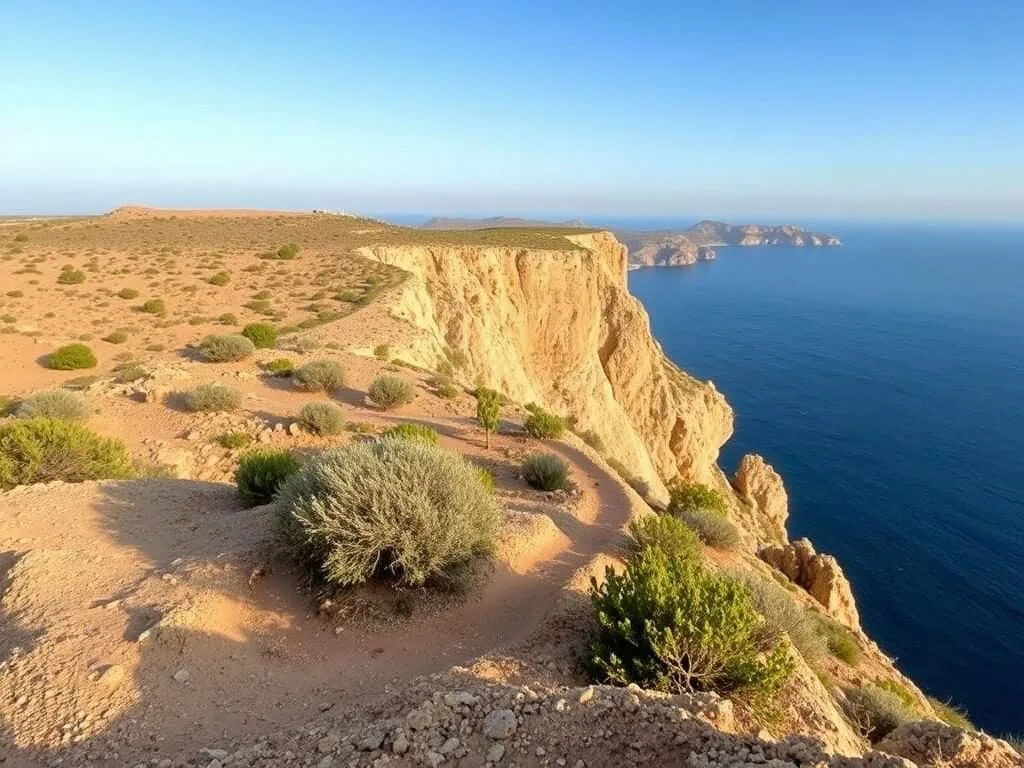
Hiking
Trek along limited authorized paths that wind through Zembra’s rugged terrain. The island’s highest point reaches 432 meters, offering breathtaking panoramic views of the Mediterranean. Guided hikes include information about the island’s unique flora and fauna.
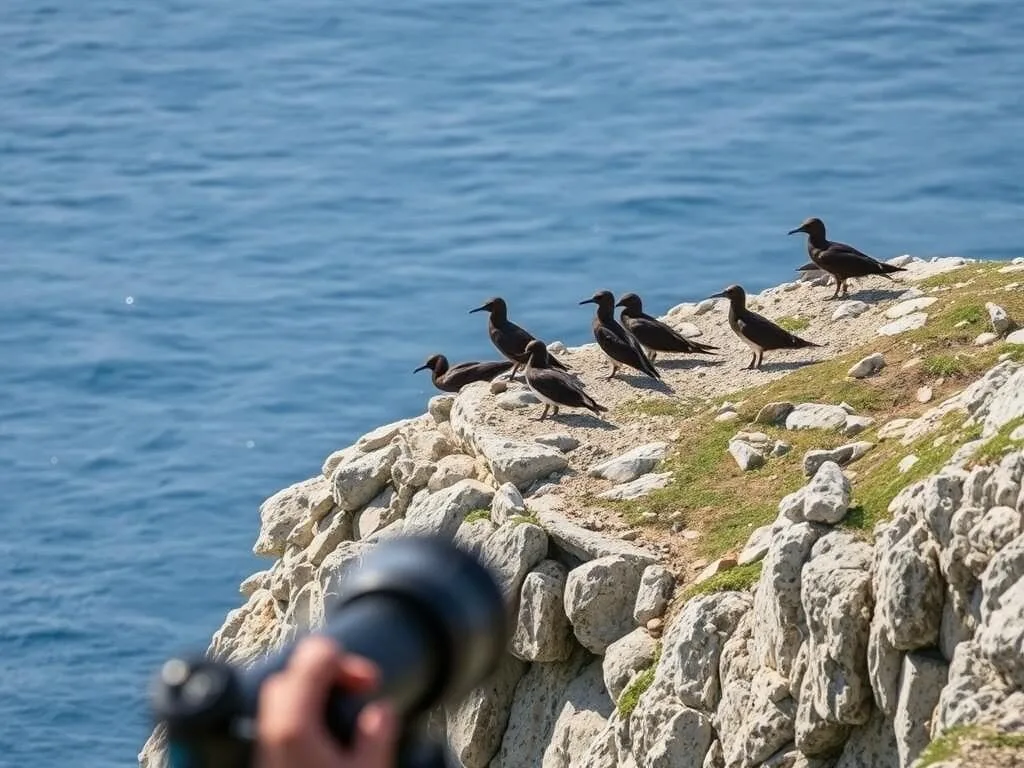
Birdwatching
Witness one of the Mediterranean’s most important seabird colonies. Zembra hosts significant populations of Scopoli’s shearwaters, Audouin’s gulls, and peregrine falcons. Spring and early summer offer the best birdwatching opportunities during nesting season.

Boat Tours
Circumnavigating the island by boat provides the most comprehensive way to appreciate Zembra’s dramatic coastal formations. Tours typically include stops at secluded coves for swimming and snorkeling, plus opportunities to spot dolphins that frequently inhabit these waters.
Experience Zembra’s Natural Wonders
Book guided tours with authorized operators who can arrange permits and provide expert guidance throughout your visit.
Wildlife & Conservation
Zembra National Park’s ecological significance extends far beyond its small size. The park serves as a critical conservation area for numerous endangered Mediterranean species.
Marine Life
- Mediterranean Monk Seal – One of the world’s most endangered marine mammals occasionally visits the island’s caves
- Loggerhead Turtles – These vulnerable sea turtles frequent the surrounding waters
- Groupers – Several species thrive in the protected rocky habitats
- Striped Dolphins – Often spotted during boat crossings
- Octopuses – Abundant in the underwater caves and rocky crevices
Bird Species
- Scopoli’s Shearwater – Over 25,000 pairs nest on the island’s cliffs
- Audouin’s Gull – A rare Mediterranean species with a breeding colony
- Eleonora’s Falcon – Uses the island as a hunting ground
- Peregrine Falcon – Several pairs nest on the island’s cliffs
- European Shag – Frequently seen diving for fish along the shoreline

Conservation Efforts
Since 2018, Zembra has operated under an innovative co-management model between Tunisia’s Coastal Protection and Planning Agency (APAL) and local NGO ASPEN. This partnership has strengthened conservation efforts through:
- Regular monitoring of bird populations and nesting success
- Marine habitat protection through restricted fishing zones
- Engagement with local fishing communities to promote sustainable practices
- Educational programs for visitors and local schools
- Research partnerships with international conservation organizations
Visitor restrictions, while limiting tourism, are essential to preserving Zembra’s ecological integrity. Your visit, conducted responsibly with authorized guides, helps support ongoing conservation efforts.
Where to Stay
Overnight stays on Zembra Island are not permitted for tourists. Visitors must base themselves in nearby coastal towns and make day trips to the national park.
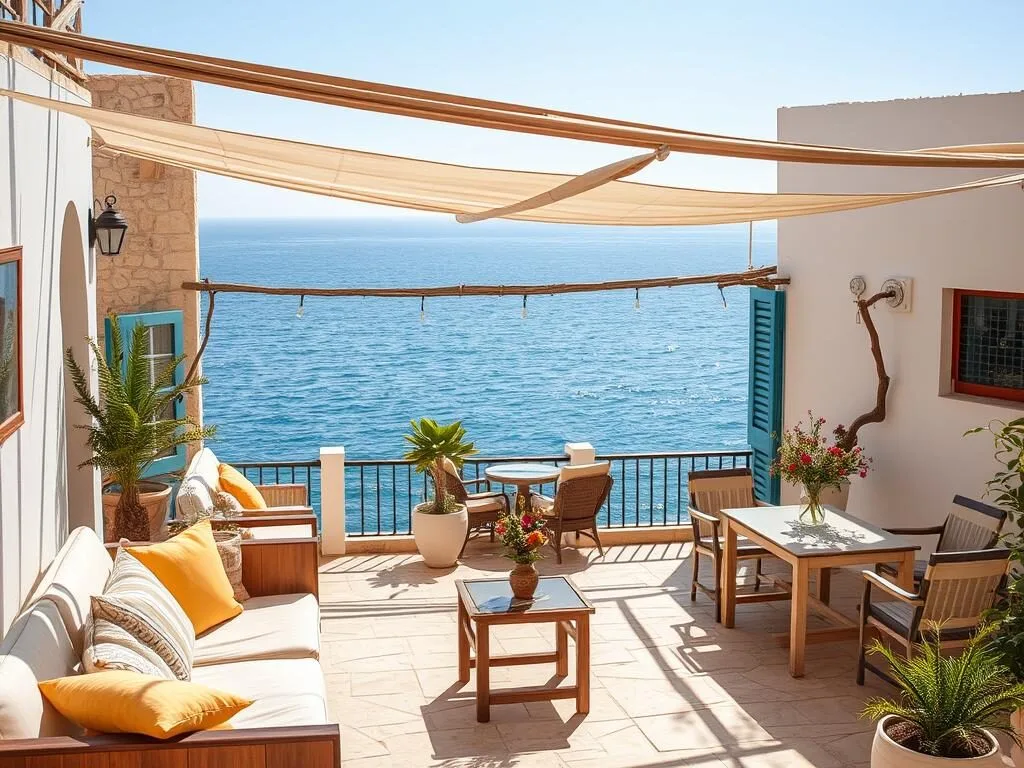
El Haouaria
This small fishing town on Cap Bon’s northeastern tip is the closest base for Zembra excursions. Accommodation options include small family-run guesthouses and basic hotels. While limited in luxury amenities, these options offer authentic local experiences and convenient access to boat departures.
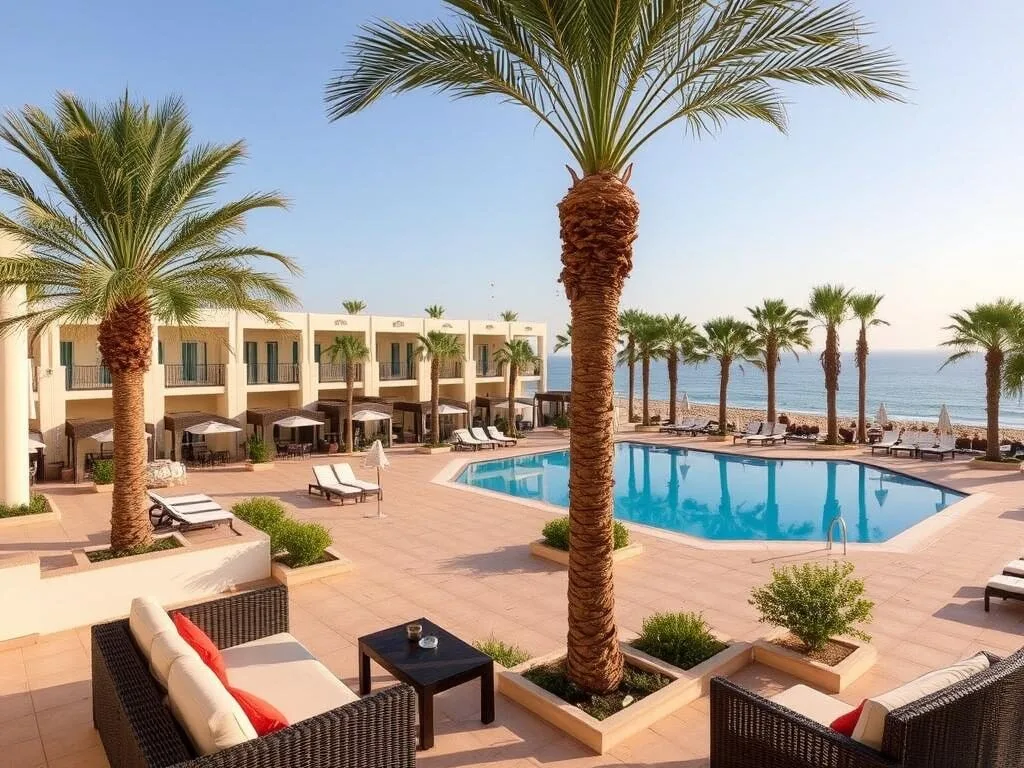
Kelibia
Located about 20 km from boat departure points, Kelibia offers more accommodation choices, including mid-range hotels with better amenities. The town features a beautiful beach and historic fortress, making it an attractive base for exploring both Zembra and the Cap Bon peninsula.
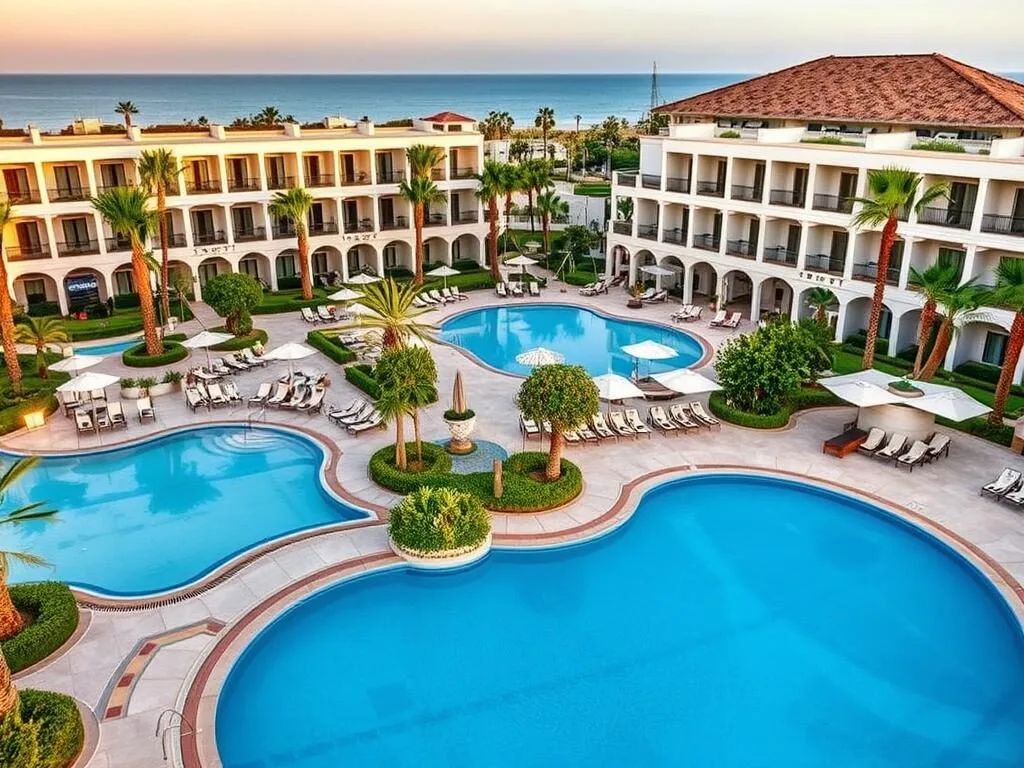
Hammamet
For those preferring luxury accommodations, Hammamet (about 1 hour from boat departures) offers international-standard resorts with full amenities. While requiring more travel time to reach Zembra, these resorts provide comfort and additional activities for a more comprehensive Tunisian vacation.
Find Your Perfect Stay Near Zembra
Book comfortable accommodations in El Haouaria, Kelibia, or Hammamet as your base for exploring Zembra National Park.
Practical Travel Tips
Local Customs & Etiquette
- Dress modestly when visiting local towns and villages
- Ask permission before photographing local people
- Learn basic Arabic greetings to show respect
- Remove shoes when entering homes if invited
- Respect prayer times in Muslim communities
Safety Considerations
- Always visit with authorized guides who know safety protocols
- Check weather forecasts before boat departures
- Bring sufficient water to prevent dehydration
- Use high-factor sunscreen to prevent sunburn
- Follow all guide instructions regarding protected areas
Essential Packing List
Documents
- Passport with Tunisia visa (if required)
- Travel insurance documents
- Park visit authorization (if arranged personally)
- Cash in Tunisian Dinars (limited ATMs in small towns)
Clothing & Protection
- Lightweight, quick-dry clothing
- Swimwear and towel
- Hat and sunglasses
- Hiking shoes with good grip
- Light jacket (for boat trips)
Equipment
- Binoculars for birdwatching
- Camera with zoom lens
- Reusable water bottle
- Snorkeling gear (if not provided)
- Dry bag for electronics
Important: There are no facilities, shops, or freshwater sources on Zembra Island. Bring everything you need for your day trip, including sufficient water, food, and sun protection.
Experience Zembra’s Untamed Beauty
Zembra National Park represents one of the Mediterranean’s last truly wild places. Its protected status ensures that visitors experience nature in its most pristine form, from dramatic cliffs to crystal-clear waters teeming with life.
While reaching this hidden gem requires extra planning and effort, those who make the journey are rewarded with extraordinary natural experiences far from the beaten tourist path. By visiting with respect and care, you contribute to the ongoing conservation of this ecological treasure.
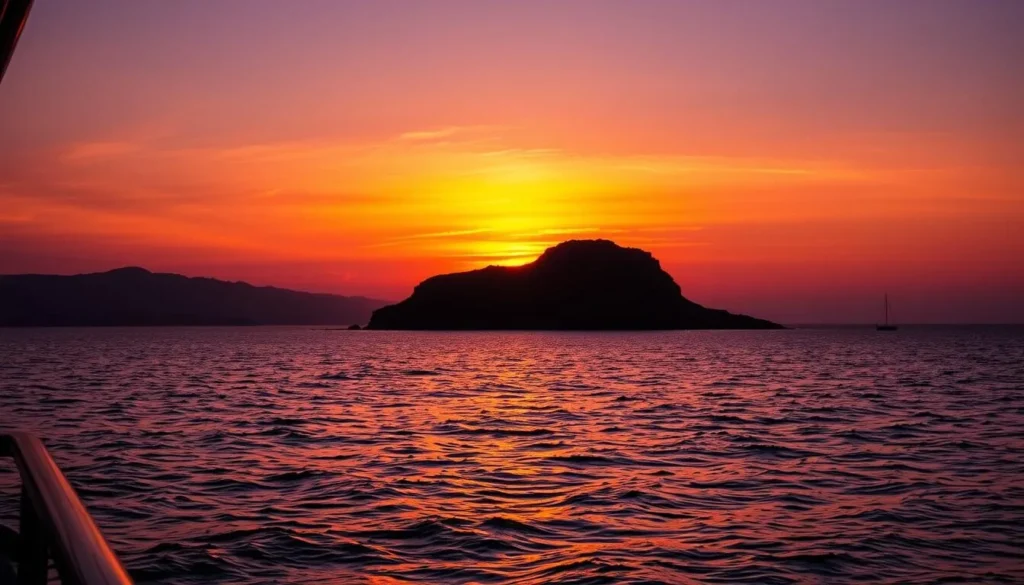
Ready to Explore Zembra National Park?
Start planning your Tunisian adventure today with flights, accommodations, and guided tours to this Mediterranean paradise.
The above is subject to change.
Check back often to TRAVEL.COM for the latest travel tips and deals.
